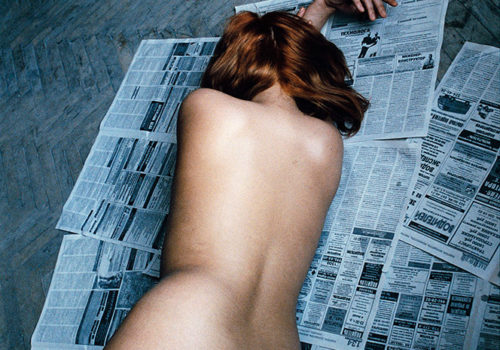Minsk held its Month of Photography in October. The French photographer Françoise Huguier presented her series Komunalka there, and she shares with us her impressions from her trip to Belarus.
I found Minsk to be even tidier than it was seven years ago, when I went there to do a report on the traces of “Napoleon’s retreat from Russia.” Their highways were completely deserted.
At the airport, I fell straight into the arms of Andrei Liankevich, whom I had met on my first visit to Minsk and whose images I exhibited at the Photo Biennale in Luang Prabang and at Photoquai 2011. He is now the artistic director of the second edition of the Month of Photography in Minsk, and had asked me to contribute Komunalka, since Belarusians are interested in communal apartments, having themselves been a part of the USSR.
Andrei drove me to the CECH Art Spacing, which housed the majority of the Month of Photography exhibitions. Some photographs were displayed in alcoves, others were hung on plywood panels set up in hall.
The Belarusian photographer Siarhiej Lieskiec’s subject matter, AGRO, caught my attention. The artist works with young people whom the government entices to go back to the countryside as part of the program “Rural Renaissance.” They are offered a free house in one of the tiny villages within the abandoned sovkhozes. Siarhiej Lieskiec clarified that “on the one hand, they’re given a leg-up into adult life and are able to avoid taking out a mortgage and going into debt or languishing on a waiting list while living with their parents. On the other hand, the city youth who move to the country find themselves in the same comfort zone as their parents without even realizing it, and are limited in their choices for the future.”
A bit further on, Jana Romanova (Russian) was exhibiting her series Waiting, mounted on 20 cm thick plywood blocks. These were photographs of sleeping couples where the woman is pregnant: tightly framed shots, top-down views, very precise attention paid to the body language of those couples in the early morning hours, to the colors and details of the sheets, floral covers, pajamas, underwear. I found all these details of morning intimacy very compelling. The project not only explores the attitudes of people expecting a child, but also the lifestyles of young parents in large modern Russian cities, twenty years after the collapse of the Soviet Union when birthrates have dramatically declined.
Lastly, a retrospective of Jury Vasiljeǔ’s work not only presents his activity as a photographer, but also pays homage to his crucial contribution to the creation and development of an amateur photographic community in Minsk, organized around the photo club “Minsk” he founded in 1979. His vintage, large format print, dating back to 1973, entitled “Senturis, carelia,” represents a close-up of a woman wearing sunglasses and a head scarf, with the onion domes of a Russian Orthodox church in the background. It made me think of Rodchenko’s aesthetics.
Next, my visit took me to an old, brick-walled staircase featuring portraits of battered women by a young Belarusian photographer, Alexander Vasukovich. He had been working on this project for three years, and his very personal portraits appealed to me because of the originality of his approach, the intimate, topical vision of violence against women, like in this rather blurred portrait where the only point of focus is the woman’s bruised neck.
On the first floor, talks on photography moderated by historians were held in a conference room adjacent to the Komunalka installation. The Month of Photography continued at the Museum of Modern Fine Art which features the series of portraits It’s All My Fault and Love. Just You and Me by the Poland-based Belarusian photographer Marina Drozza-Sobowska. The portraits are an existential-psychoanalytic exploration of the “grey zone” between the concepts of love and guilt.
The architect Satvitsky is behind the construction of the Moment suprême at the Museum of Contemporary Art. The German photographer Manuel Schroeder explained to me his conception of a “moment of supreme inspiration”: “It’s more than art; it’s a moment of reality.” The title is originally in French—a language he does not speak. The artist draws inspiration from mystery and has a predilection for evening and nocturnal light. The intense colors and train station settings reveal the influence of Hopper. Schroeder uses a digital camera mounted on a tripod, and never retouches his photos. His images lend a novel strangeness to what we normally think of as familiar, thereby revealing our unconscious subjectivity. He never frames his works but nails them directly to the wall.
I left Minsk at 11 a.m. by the same highway winding through birch forests, with no cars or billboards in sight. At the airport, I learned that the Nobel Prize in literature was awarded to the Belarusian writer Svetlana Alexievich. The photo on the cover of the French translation of Second-Hand Time is credited to Andrei Liankevich.
Françoise Huguier
INFORMATION
The Month of Photography in Minsk
In partnership with Goethe Institut of Minsk and France Embassy of Belarus
http://mfm.by/en/about/
















